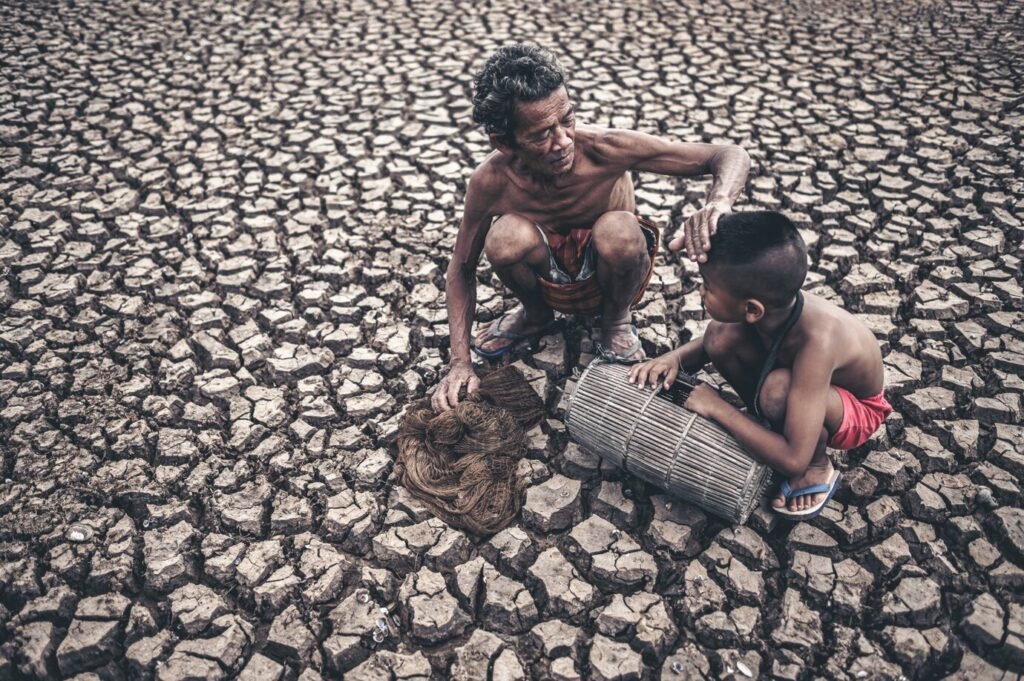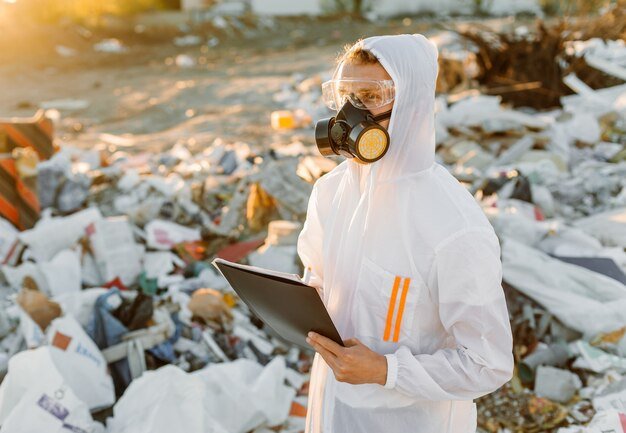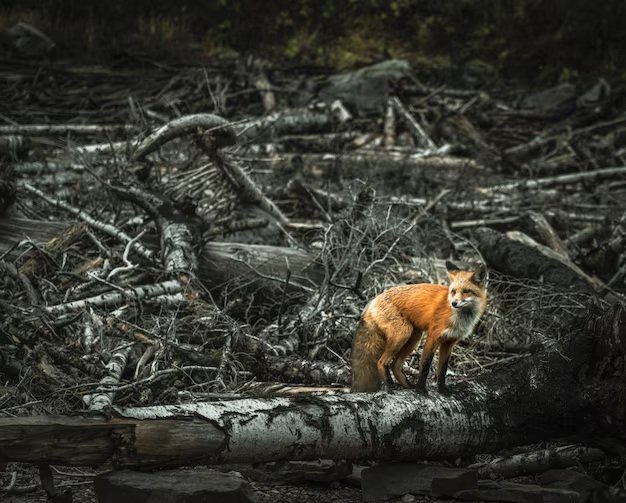Environmental Injustice Examples Around the World
Injustice doesn’t always show up in obvious ways. It might not wear a badge or hold a weapon, but it can be just as harmful. Sometimes, it slips quietly into the water people drink, fills the air they breathe with pollution, or washes away the shores where families have lived for generations. This is what we call environmental injustice — a real, global issue that affects people in very personal ways. It often hits hardest in communities that are already struggling, especially because of race, income, or where they live.
As climate change and environmental problems grow worse around the world, it’s becoming more important to understand how unfairness is built into many systems — and how it affects people’s health, homes, and futures.

In This Article
- What Is Environmental Injustice?
- Environmental Injustice Examples
- Voices: Real Lives, Real Struggles
- Conclusion: Actionable Solutions
What Is Environmental Injustice?
Environmental injustice happens when some communities carry the heaviest environmental burdens while enjoying the fewest benefits, like clean air, safe water, or green spaces. These disparities usually reflect deeper systemic problems such as historical colonisation, racism, and economic marginalisation.
According to the United Nations Environment Programme (UNEP), achieving environmental justice means ensuring that “fair treatment and meaningful involvement of all people regardless of race, colour, national origin, or income” play a role in shaping environmental policies and safeguards.
Here are the key characteristics that define it:
- Disproportionate exposure to pollutants: Disadvantaged communities often face higher levels of toxic air, contaminated water, and dangerous industrial waste. For instance, a 2025 study found that minority and low-income groups are still exposed to significantly more PM2.5 and PM10 air pollution.
- Lack of political voice: These communities frequently have less say in where factories go, how land is used, or which environmental protections are enforced, leaving them more vulnerable.
- Unequal access to clean resources: Access to clean air, safe drinking water, green spaces, or healthy soil is often limited for marginalised populations.
- Cumulative impacts: These issues compound one another—pollution, poverty, poor health, inadequate education. The EPA now emphasises the importance of evaluating cumulative exposure to tackle layered health risks.
Environmental Injustice Examples
1. Cancer Alley, USA: A Legacy of Sacrifice
Stretching around 85–130 miles along Louisiana’s Mississippi River, Cancer Alley is a dense corridor of over 200 petrochemical plants located within predominantly Black, low‑income communities. These neighbourhoods suffer disproportionately from high rates of cancer, respiratory illnesses, and other chronic diseases. A 2025 peer-reviewed study found that higher cancer incidence is linked to increased exposure to industrial air toxins and to social vulnerability, including poverty and racial disparities.
Local residents describe living with toxic fumes so overwhelming that they disrupt sleep, corrode plants, and reduce quality of life.
Scientific measurements revealed alarmingly high concentrations of cancer‑linked chemicals. For example, ethylene oxide levels sometimes reached over a thousand times the EPA’s safe threshold. In response, the EPA has formally recognised the region as an environmental justice priority and called out state regulators for systemic discrimination.
In 2025, a federal appeals court revived a lawsuit filed by St. James Parish residents, allowing their claims of environmental racism and damage to ancestral burial sites to move forward. This marks a pivotal step toward accountability. Yet communities remain on guard, pressing for stricter regulations, health support, and environmental equity.
2. Kabwe, Zambia: Children and Lead Poisoning
Kabwe was once a booming lead-mining town, but for decades, the abandoned mine and smelting operations continuously dumped lead-laden dust into the air, soil, and water. As a result, Kabwe is now widely regarded as one of the most polluted towns in Africa—and even the world. According to Human Rights Watch, in early 2025, uncovered waste piles containing approximately 6.4 million tonnes of lead-bearing material continue to release toxic dust across residential neighbourhoods, schools, clinics, and roads, affecting around 200,000 people.
Health data paints a devastating picture—over 95% of children living near the former mine have dangerously high blood lead levels, and nearly half require urgent medical care. Earlier studies have shown average blood lead levels around 11.9 µg/dL—significantly above the CDC’s 5 µg/dL safety limit—and soils in some areas registered up to 60,000 ppm, far exceeding toxicity thresholds.
Efforts to clean up the contamination began slowly around 2015, with limited soil remediation in a few dozen homes and clinics. However, by 2024, government action remained restricted to small pilot projects, while the dangerous informal processing of lead waste by local traders has actually worsened exposure.
Legally, a class-action lawsuit representing approximately 140,000 children and women has been moving through South African courts, with permission to appeal granted in April 2024. Plaintiffs argue that Anglo American—owner of the mine from 1925 to 1974—knew about the severe hazards and did nothing to address them.
3. Ok Tedi, Papua New Guinea: Rivers Turn to Sludge
Between 1984 and 2013, the Ok Tedi Mine in Papua New Guinea dumped nearly two billion tons of untreated tailings directly into the Ok Tedi and Fly Rivers. This relentless discharge—averaging around 80 million tons annually—transformed clear waterways into lifeless sludge and drowned over 1,000 km of river ecosystems mdpi.com+12en.wikipedia.org+12sites.lsa.umich.edu+12.
In the 1990s alone, the mine spewed about 90 million tons of waste each year. Toxic heavy metals, especially copper, spread throughout the river system, raising levels to roughly 30 times above natural background. On the floodplains, fish populations plummeted and vegetation died—around 30 km² of forests already lay dead, with as much as 3,000 km² at risk.
More than 50,000 people living in over 120 downstream villages lost their livelihoods. Their crops were buried under contaminated sediment, fisheries collapsed, and vital cultural traditions tied to the river were upended. Even after a settlement that paid about $28.6 million in compensation, the dumping continues. Scientists warn that the sediments deposited along the riverbanks could still trigger acid drainage as they oxidise, making true recovery a centuries‑long endeavour.
4. Portillo Cáceres v. Paraguay: Farmers Poisoned by Agrochemicals
In early 2011, Rubén Portillo Cáceres lived next to sprawling soy plantations in Paraguay. One day, he suddenly fell ill—nausea, fever, vomiting—and tragically died on the way to the hospital. Twenty-two neighbours, including his young son, were also poisoned by pesticide drift from the nearby fields. These agribusinesses had sprayed toxic chemicals without the legally required buffer zones, contaminating everything from waterways to homes.
Fast forward to August 9, 2019—the UN Human Rights Committee ruled that Paraguay was guilty of violating its citizens’ rights to life, privacy, family life, and effective remedies by allowing harmful agrochemicals to contaminate communities without taking action. This marked the first time the Committee held a state accountable for environmental harm under the International Covenant on Civil and Political Rights, setting a global precedent..
But the story doesn’t end there. Ongoing research shows serious health consequences tied to pesticide exposure—including cancer, respiratory problems, and DNA damage—especially in rural Paraguay, where agrochemical use has soared.
5. Nigeria’s Niger Delta Oil Spills
Nigeria’s oil‑rich Niger Delta—home to many marginalised communities—has suffered chronic oil spills, gas flaring, and water pollution. These crises have persisted for decades, yet recent research reveals the damage is not only ongoing but accelerating. A 2025 study using satellite and AI data found mangrove forests are dying at a rate of around 5,644 ha per year—an area equivalent to 17 Central Park-sized forests annually—highlighting hotspots along pipeline networks that urgently need restoration.
Locals—predominantly fishers and farmers—have seen their livelihoods collapse. A water‑quality survey in Bayelsa revealed dangerously high levels of bacteria and coliforms, along with traces of naturally occurring radioactivity in groundwater. Health concerns have followed: skin lesions, respiratory illnesses, and even elevated cancer risks have been documented in communities exposed to the pollutants. One study found residents near gas‑flaring sites faced a 1.75× higher chance of hypertension and a 24% increase in childhood malnutrition.
Despite legal frameworks, accountability remains elusive. Clean‑up programs have been hampered by mismanagement and insufficient oversight. A major U.N. review of the Bayelsa clean‑up initiative found pollutant levels in soil, water, air, and human blood far exceeding safe thresholds.
6. Dock Sud (Villa Inflamable), Argentina
In Buenos Aires’s Dock Sud neighbourhood, known locally as Villa Inflamable, 44 hydrocarbon companies operate along the Riachuelo River. This area has been classified as an environmental “sacrifice zone,” where industrial activity has consistently polluted soil, air, and water. Reports from both Argentine authorities and independent researchers confirm elevated levels of lead, chromium, and benzene in local water supplies—concentrations that exceed safe limits established by international health guidelines.
The community here bears the brunt of this contamination. An ethnographic study reports that nearly half of the children tested in Villa Inflamable showed elevated blood lead levels. Beyond lead, residents suffer chronic respiratory problems suspected to stem from benzene exposure, common near petrochemical operations.
The situation is made more complicated by a lack of trust. Researchers call it a “labour of confusion,” where residents are often unsure about where the pollution is coming from. This confusion grows worse because companies, government agencies, and courts often give different or unclear answers. Promised solutions—like cleaning the soil, treating the water, or relocating families—are often delayed or never happen, leaving people stuck in a cycle of hope and disappointment.
7. Jordan: Zarqa & Al-Hashmia
In Zarqa, the river is heavily contaminated. It carries untreated sewage, industrial chemicals, and heavy metals downstream, where farmers rely on it to irrigate crops. According to a 2025 study, more than 59 million m³ of treated wastewater drains into the Zarqa River annually, and even after mixing into the King Talal reservoir, pollutant levels often remain above safe irrigation thresholds.
Earlier research identifies industrial discharges, sewer overflows, and agricultural runoff as sources of organic pollutants, nutrients, and metals such as chromium, nickel, cadmium, boron, and manganese, which sometimes exceed Jordanian irrigation limits. These toxic waters affect over 5.5 million residents downstream who depend on this water for food production.
In nearby Al‑Hashmia, pollution is also choking the air. Monitoring data reveal that concentrations of PM₁₀, nitrogen dioxide, and sulfur dioxide regularly surpass World Health Organisation and Jordanian standards . One long-term time-series study found that although levels of NO₂ and SO₂ have slightly declined, PM₁₀ levels have risen, posing chronic respiratory risks for more than 80,000 residents in the area.
8. South Africa: Kosmos Informal Settlement
In Kosmos, South Africa, municipal neglect has left residents in the informal settlement cut off from essential waste services. While nearby upscale estates enjoy regular trash collection, Kosmos sees little to no service—skip bins overflow, garbage piles up, and incineration sometimes becomes the only way to clear space. A 2023 study in GeoJournal documented these conditions through photos and resident testimonies, revealing how mounting waste turns streets into health hazards.
Such neglect creates serious public health risks. Uncollected trash attracts vermin, fosters foul odours, emits harmful pollutants when burned, and endangers children who play near open dumps. Sanitation services are lacking too—pit latrines remain poorly maintained, heightening hygiene and safety concerns.
With limited institutional support, the community has taken action. Small-scale local recycling initiatives have emerged as grassroots coping mechanisms, even appearing in medical research databases as examples of community resilience. While these efforts show ingenuity and determination, they remain no substitute for reliable municipal services. Systemic neglect continues to expose residents to daily environmental injustice.
9. China: Petrochemical Villages
Living just outside Nanjing, villagers and migrant workers in peri-urban “petrochemical villages” have quietly endured years of toxic exposure from nearby chemical plants. A field study shows that these communities face “accumulated injuries of environmental injustice”—multiple, layered harms that combine uneven risk awareness, limited compensation, and a sense of political helplessness in confronting daily pollution. wrap.warwick.ac.uk+1mdpi.com+1.
Health data reveals troubling consequences: residents within 10 km of petrochemical zones showed higher cancer rates after prolonged exposure—older adults and women, in particular, had between a 1.4 and 1.9‑fold increase in overall cancer incidence . Globally, meta‑analyses confirm elevated risks for serious diseases—lung, pancreatic, leukaemia, and even kidney conditions—linked to living near petrochemical complexes.
What strikes me most is how these communities are often overlooked. Workers and families tolerate pollution because housing near plants is cheaper, and local protections are weak. Despite small protests and occasional local media reports, there’s no large-scale resistance like the PX protests in other Chinese cities.
10. Stand‑your‑Ground US Activism: Warren County & Standing Rock
Warren County, NC (PCB protests, 1982)
In 1982, a small rural community in Warren County, North Carolina, fought back when the state picked their mostly Black neighbourhood to bury PCB‑tainted soil. For six weeks, people sat in front of trucks and marched together. Over 500 were arrested, and though the landfill was built, the protest caught national attention. Recently, scholars from North Carolina Health News revisited the story, showing how today’s climate and health advocates still draw inspiration from that pivotal moment. It also helped lay the groundwork for federal initiatives like Justice 40, which aims to invest in communities historically burdened by pollution.
Standing Rock (2016)
IN 2016, the Standing Rock Sioux stood their ground against the Dakota Access Pipeline. They raised concerns that the pipeline threatened their sacred lands and water near Lake Oahe. What began with youth‑led actions grew into a massive movement, drawing thousands of “water protectors” and global solidarity. The tribe took legal action, arguing the pipeline lacked proper environmental review and violated treaty rights.
Voices: Real Lives, Real Struggles
Rosemary Green, 69, from St. Rose, said in an interview with Vox.com that she often wakes up choking from foul odours in her home, and that the rosebush she inherited from her grandmother has died.
Pamela Rush, from Collirene, Alabama—part of the Black Belt—lived with open exposure to septic sludge and raw sewage. In a study of 24 households, 42% reported sewage flooding in their homes, and more than a third of residents had parasite infections, including hookworm. According to a report by The New Yorker, this dire situation worsened her health during the COVID‑19 pandemic and ultimately contributed to her death.
In Mississippi’s Delta region, researchers found that 38% of tested children carried intestinal parasites and 80 percent showed signs of serious inflammation, effects tied to ageing sewer systems and poverty.
Black Appalachian activists in West Virginia, like midwives, farmers, and organisers such as Staysha Quentrill and Marcia Dinkins, are mobilising to halt the health impacts of extractive industries and rebuild healthy, just environments.
Conclusion: Actionable Solutions
Strengthening laws can make a real difference. A powerful example is the Portillo Cáceres case, where the UN Human Rights Committee recognised that ignoring toxic agricultural runoff violated people’s right to life and family welfare. We need to bring landmark rulings like this into national statutes to truly protect environmental rights.
It’s essential to include local voices in planning. Frontline communities hold critical knowledge. We can support grassroots activists, environmental stewards, and even midwives, offering training and small grants so they can monitor air, soil, or water in their neighbourhoods.
We must set tighter pollution limits. According to the EPA, nearly one in five US public schools lies within half a mile of ten or more pollution sources. New York’s “SIGH” Act, which bans new school sites within 500 feet of major highways, is a step forward.
Investing in infrastructure and cleanup matters. Many regions still lack safe waste management and have lead‑tainted soil. Victims of contamination—like those near Ok Tedi or in Kabwe—deserve funded healthcare, clean‑up, and education support.
Prioritise health research in hotspots. Recent investigations show school absences, respiratory illness, and even brain harm linked to air pollution. Targeted studies can guide where action is most needed.







